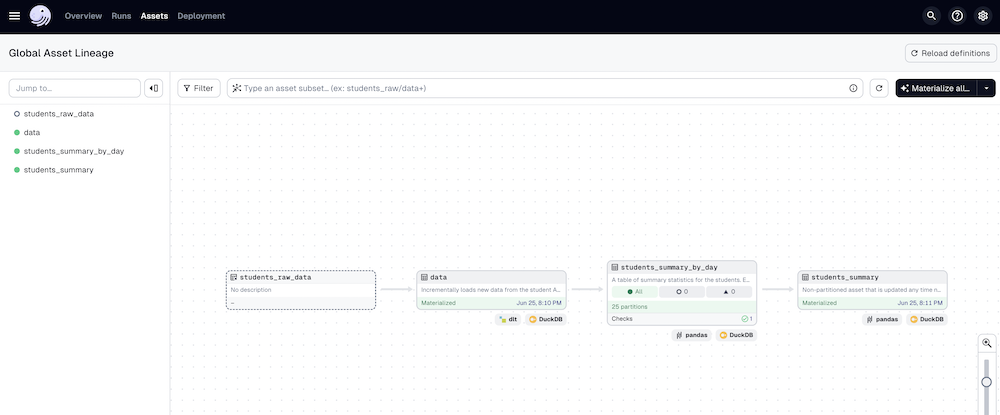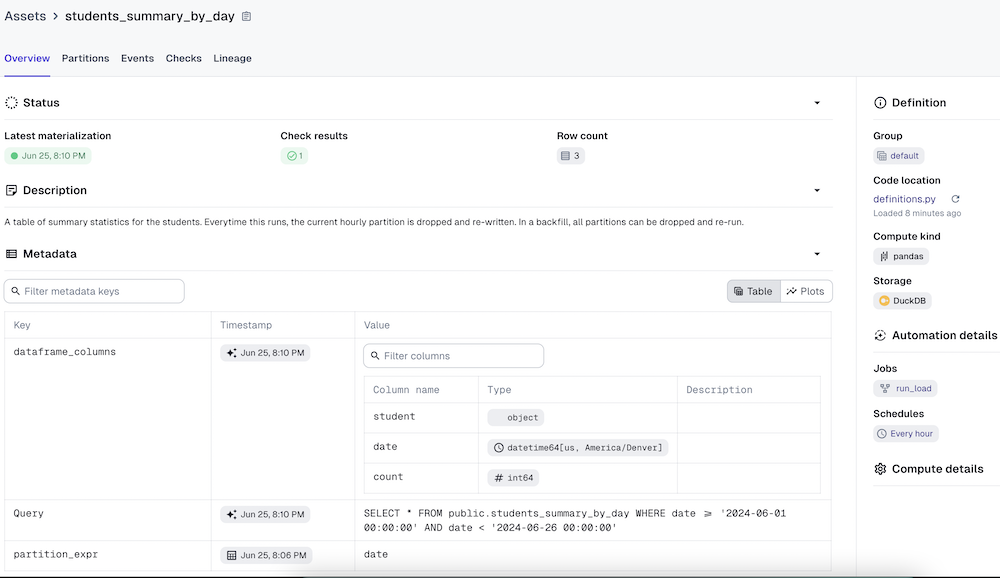This example shows how to create a pipeline that uses dlt to load data incrementally from an API to a warehouse (DuckDB), and then use Dagster assets to further transform that data and apply data quality checks.
Documentation is included inline in definitions.py. The app.py file is a simple web server that will respond to the dlt API requests with fake mock data.
To get started:
pip install -r requirements.txtmake run Once Dagster is loaded, navigate to the Assets page, select View global asset lineage, and click Materialize all. When prompted, select Launch Backfill.
Note that this example makes use of IO Managers, which are an advanced Dagster concept designed for specific circumstances. Read more here. In this case, the desired behavior was a good fit for IO Managers:
- to process data in Python and store it, partitioned, in an easily serializable format
- automatically collect metadata about the table schemas, row counts, and query

